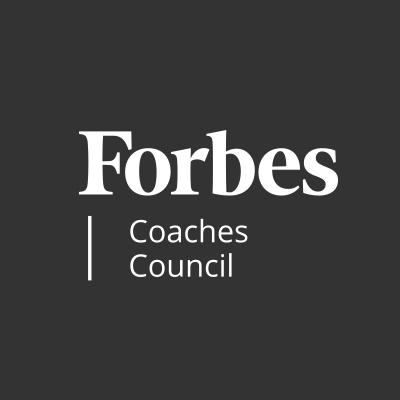The knowledge-worker workplace laboratory has already been working overtime in ’20 and ’21 and achieving some impressive successes. We’ve seen experiments galore designed to take the best of what we have learned from adapting to the Covid-19 pandemic and apply the learnings to improve the effectiveness of our people and teams, whether working in the office, from home or in a hybrid arrangement. I’ve seen five principles emerge that companies large and small are applying with admirable success.
1. Have purpose drive where work is done.
Bring people together in the office for highly collaborative work where in-person, face-to-face is best, and leave the rest to flexible hybrid and work-from-home solutions.
Perhaps the most fundamental change is that the tradition of doing all our work in the same building is ending. Teams are finding ways to organize and plan so that they are physically together at key times when collaboration is needed and working more independently when concentration and individual thinking are most needed. Agile teams are planning sprints with built-in in-person time to solve problems and be creative. Leadership teams are reserving in-person time for well-prepared deep dives on strategic issues that truly need the full leadership team’s perspective. Companies are gradually letting go of the need for employee face time, replacing it with high-impact stories of working creatively to solve thorny problems. We’ve seen the return of critical in-person meetings with participants from multiple geographies coming together safely in ways designed to maximize productive interactions and deliver unique results.
2. Teach, coach and insist that leaders adapt to the hybrid workplace, with a special focus on outcomes over activities.
The old days of one-size-fits-all and “I can’t manage them if I can’t see them working” is fading. As Ellen Ernst Kossek, Kelly Schwind Wilson and Lindsay Mechem Rosokha wrote (registration required) nearly a year ago in HBR, managers are learning to embrace both “predictability (that is, the structure of set schedules, deadlines, routines, and backups) and ‘flexible flexibility’ (that is, a willingness to shift working parents’ tasks and processes, reduce lower-priority work, and incorporate planned slack time to buffer deadlines).”
Executives to frontline managers are adapting new tools for adding value, overseeing work and developing their people. Much like accomplished regional managers, office or hybrid-based managers are minimizing meetings, optimizing agendas, clarifying expectations and supporting cross-team collaboration on breakthrough projects. Leaders stay in touch with their people with weekly 15-minute talks focused on what is most important and on how each person is really doing. What builds two-way trust in hybrid working situations is being made far more explicit, enabling all to stay focused on outcomes. Companies are using pulse surveys to identify managers who are adapting well and to reach out to those needing additional coaching or training. Perhaps most encouraging is seeing executives initially frustrated with hybrid location teams getting creative, further empowering and gradually adapting their ways of working.
3. Situationally use new and traditional communication technologies.
If 2020 was the year of Zoom or Teams for everything, 2021 has become about selecting the right tool for the situation — and using it really well. Text is reserved for what is truly urgent. E-mails are for factual communication that prepares colleagues for virtual or in-person time together. The telephone is used for short discussions that can break logjams. Video with new artificially intelligent technology is used when visual cues are most important, perhaps on issues that are emotionally or politically loaded. Slack and similar tools have become more focused, helping colleagues quickly determine what to read and what to ignore. Group Zooms are now well designed, fully utilizing breakout groups, polling and other tools that keep people engaged and feeling like progress is being made.
4. Employees and leaders set practical boundaries that support work getting done outside of the office and minimize burnout.
Working in 2021 means mass customization by leaders. Calendaring tools enable colleagues to easily show times when they are available for unscheduled connections, times when others can expect responsiveness and times reserved from work interactions. New apps are coming online that use company project databases to identify opportunities for colleagues to connect/network with others where connections are less than obvious. The chance meeting in the hallway or at the cafeteria is now augmented by software that helps us see and make connection possibilities a reality, including across time zones and distant geographies. Many companies are now fully committed to the role of working from home and helping colleagues design spaces in their homes that are conducive to work, from bandwidth solutions and noise-canceling headphones to better lighting and standing desks. We’ve also seen the recognition that working at home in multi-generational, tight spaces will never be as productive as needed, so companies are creating small hyper-local spaces and leveraging co-working spaces for colleagues to use when working at home isn’t possible and commuting to a distant office isn’t practical.
5. Unleash human resources and fully adapt company processes and policies to be fit for purpose.
Many companies are fully adapting to the idea of finding the best people where they are and designing their experience to be all it can be. Performance management systems are being simplified to support how leaders need to lead. Human resource departments are collaborating with facilities to experiment and design office layouts that provide flexible spaces that adapt to employee needs. Talent sourcing has been fully redesigned to find the right talent and enable that talent to contribute from wherever it might be. Culture, so often linked to place, is now being defined and built in new ways so that remote colleagues feel and stay highly engaged.
Globally, leaders have discovered how to be both highly productive personally and inspiring for their people by letting go of past practices, quickly experimenting with new ways of working all while fully engaging their people. Hard to imagine so much positive could have come out of such a challenging 2020.


